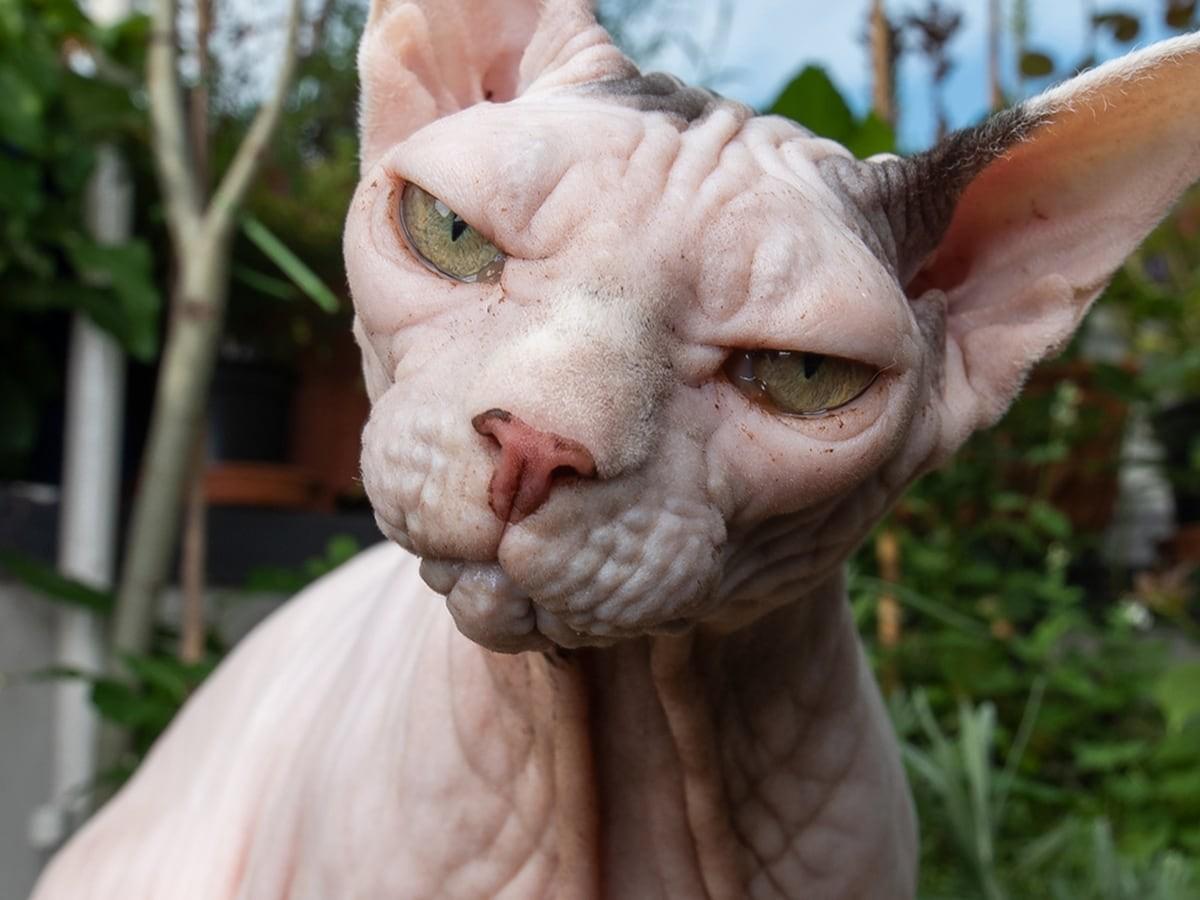If you're looking for a new feline family member, consider the unique and loving world of hairless cats. While they are more unusual and often more expensive than furry breeds, they make up for it with friendly, extroverted personalities.
Be aware, though: their lack of fur means they have specialized care needs that differ significantly from other cats.
Caring for a Hairless Cat: Specialized Needs
Hairless cats require more time and effort because they lack the natural tools (fur) to remove body oils, protect their ears, or keep debris out of their eyes.
Essential Grooming Routine
Bathing: You must bathe your hairless cat at least once a week. Without regular washing, skin oils build up and make them sticky.
Ear Cleaning: Clean their ears twice a week using a cotton swab and cat-specific ear cleaner.
Eye Care: Gently wipe their eyes daily with a wet cloth to remove debris.
Weather & Environment Protection
Hairless cats must be kept indoors as they have no natural protection from the elements.
Sunburn Risk: Monitor them near windows; they can get sunburned. Do not use human sunscreen on cats.
Cold Protection: Buy sweaters or clothing for warmth, but remember to remove them promptly when your home is warm to prevent overheating.
Health Checks: Always consult your veterinarian about breed-specific health concerns.
Are Hairless Cats Hypoallergenic?
This is a common and often misleading question. Most people think cat allergies are linked to fur, but they are caused by the Fel d 1 protein, which is found in a cat's saliva and skin secretions.
The Reality: Since all cats produce this protein, there are no truly hypoallergenic cat breeds. The lack of hair makes little difference to this biological allergen.
The Benefit: However, hairless cats are less likely to carry pollen or dust (common outdoor allergens) into your home, making them a better choice for people with those specific sensitivities.
Hairless Cat Breeds
There are many different breeds of hairless cats. This list contains the major breeds to help you get a general idea of the hairless cat world.
Sphynx
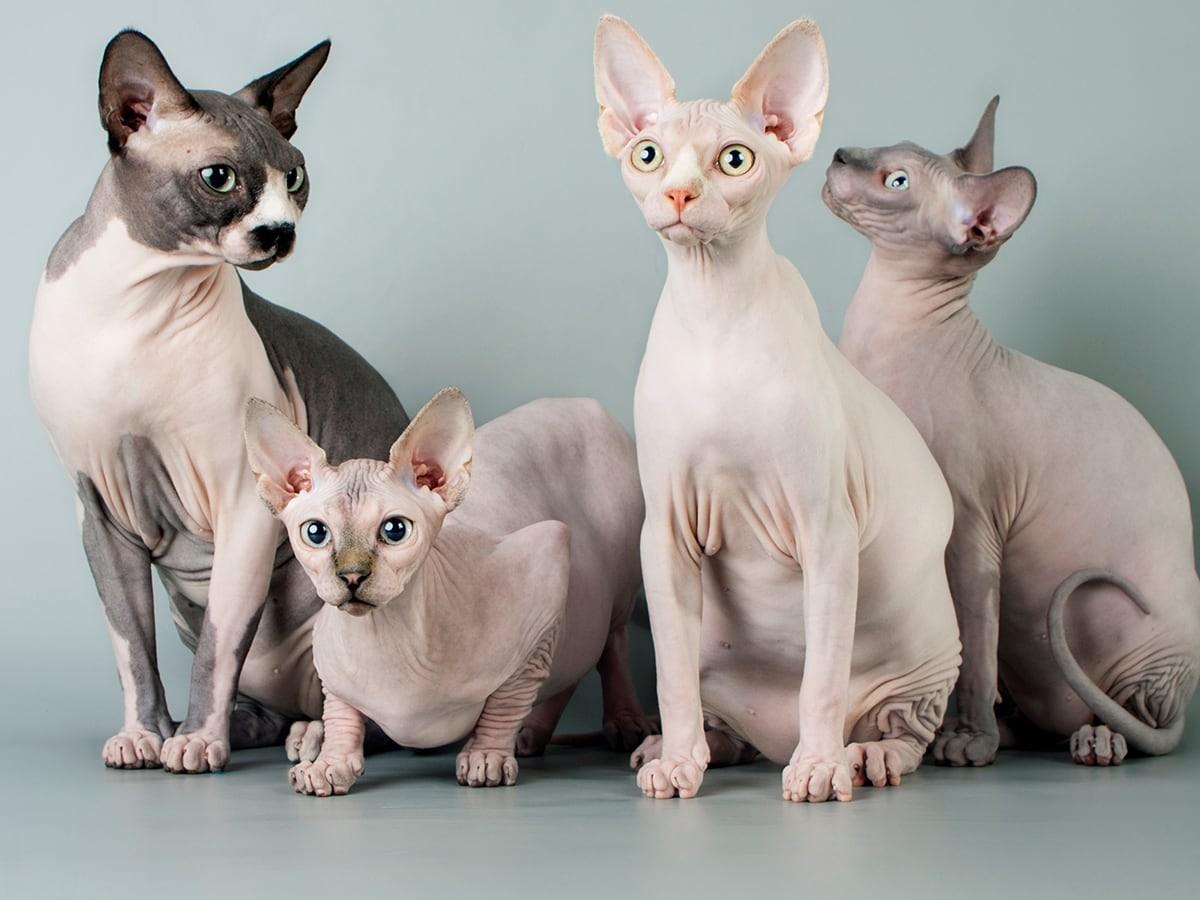
The Sphynx cat breed is probably the most commonly known type of hairless cat. They come from Canada. They are hairless because they have two recessive genetic mutations, although they are often bred with domestic shorthair cats to broaden the gene pool. They are very friendly and enjoy being around people (especially their pet parents). They’re sometimes even described as dog-like.
Sphynx cats are usually wrinkly, and they can have distinctive wrinkle patterns. Most of them are between 8 and 10 inches in height and weigh between 10 and 12 pounds. They’re lean, and they can sometimes have fuzz instead of being completely hairless.
Sphynxes may seem like they would be distant and cold, but they’re actually wonderful and loving additions to any family. They love to cuddle and can even get along with other pets, even some kinds of dogs.
Donskoy
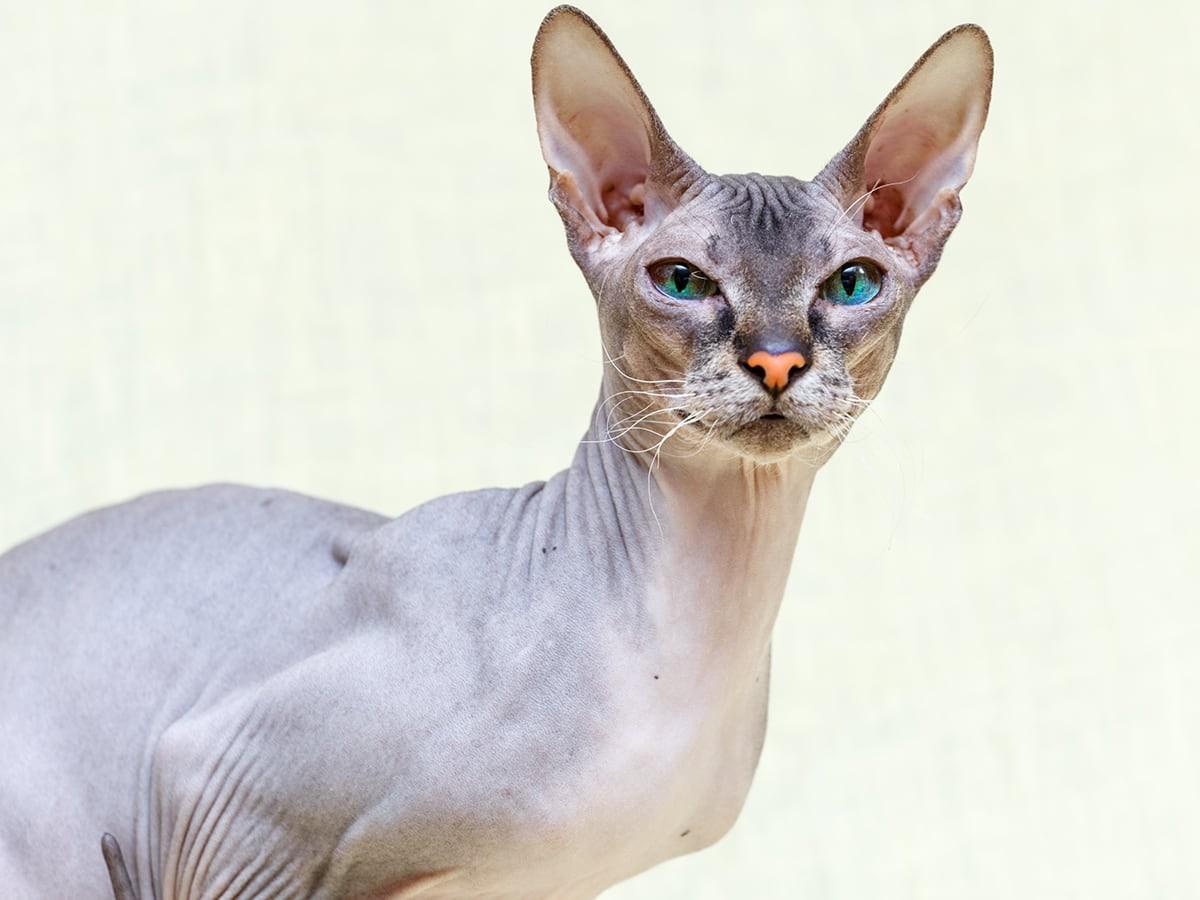
The other most commonly known breed of cat is the Donskoy. This breed has a dominant gene, which means that if they’re bred with any other cat breed, their children will be hairless.
The Donskoy originates in Russia. They’re similar looking to the Sphynx, but Donskoys tend to be much more wrinkly. They also can grow a short coat in winter, which they shed when it gets warm.
A Donskoy can be anywhere from 10 to 12 inches tall and weigh about seven to 15 pounds, making them slightly bigger than a Sphynx. Donskoys are also very sweet and sociable, and they love being around people.
Even if you weren’t considering a hairless cat before, a Donskoy could be a great companion.
Bambino

Bambinos are one of the officially recognized Sphynx hybrids. Breeders created them by crossing the Sphynx and the Munchkin, which is why they are small in stature. This is also where they get their name from since it means “baby” in Italian.
They weigh from five to nine pounds and are usually seven to eight inches tall. The reason for their small stature is their stumpy little legs, which are much shorter than those you would expect to see on a cat.
If they have fur or fuzz, it will usually be around their ears, face, tail, and legs. Like other hairless cats, they are loving and particularly enjoy playing.
If you have small ones with a love of animals, playing with a bambino can be a great way to exercise your cat and your child. Just provide them with a mouse on a string or other cat toy (and proper supervision).
Elf and Dwelf
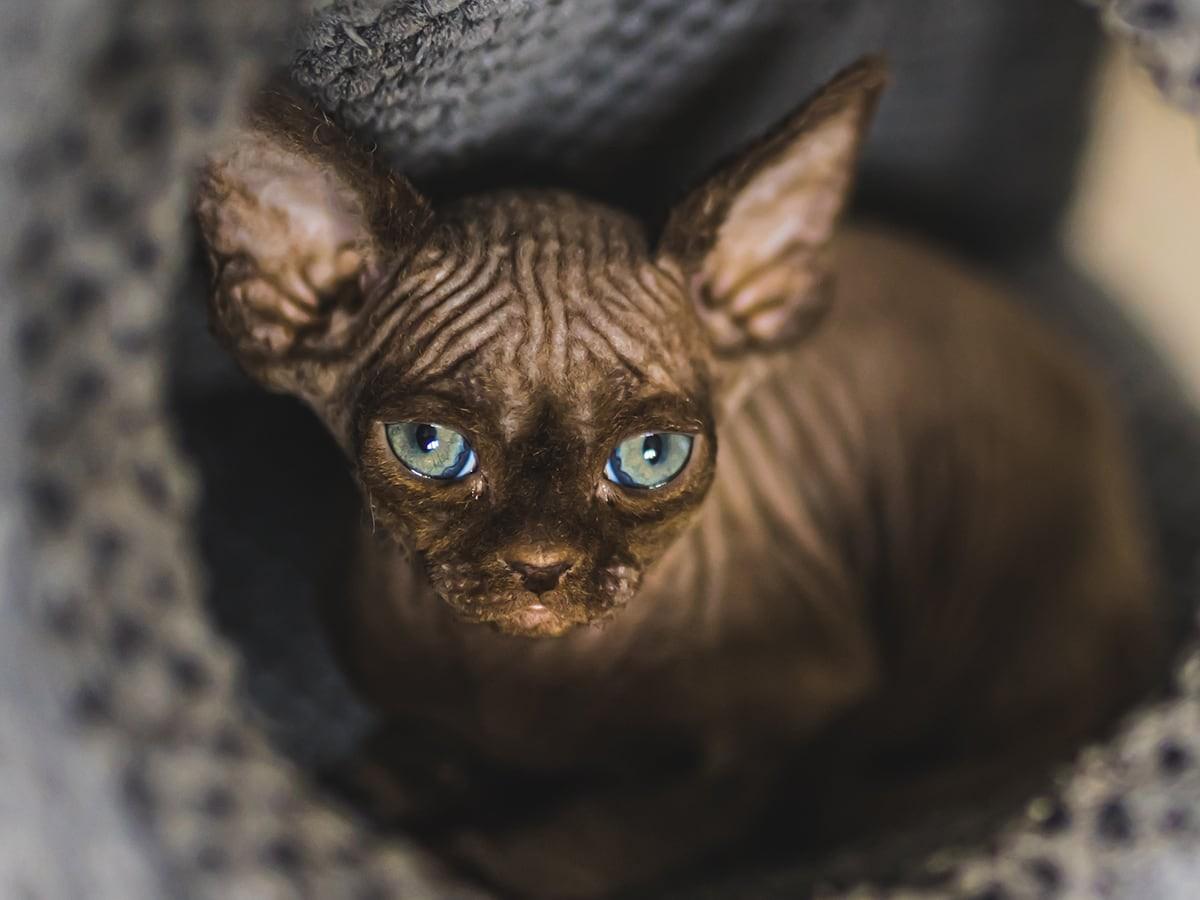
Elf cats are unique little kitties. A cross between an American Curl and a Sphynx, the Elf has ears that curl up to a point, much like the creatures they are named after. Surprisingly, Elf cats are not very small compared to other breeds, but a smaller version is known as the Dwelf.
Dwelf cats have the added heritage of a Munchkin and can have health issues related to their small stature and short legs. Other than the issue of height and health, they are similar to the Elf breed in look.
Both can have a light fuzz, and both can be playful and love to have fun. An Elf is between eight to 10 inches and 10 to 15 pounds. A Dwelf typically weighs between four to nine pounds and is six to seven inches tall.
Even though they may look a little strange with their curly pointed ears, they can be a joy about the house.
Peterbald
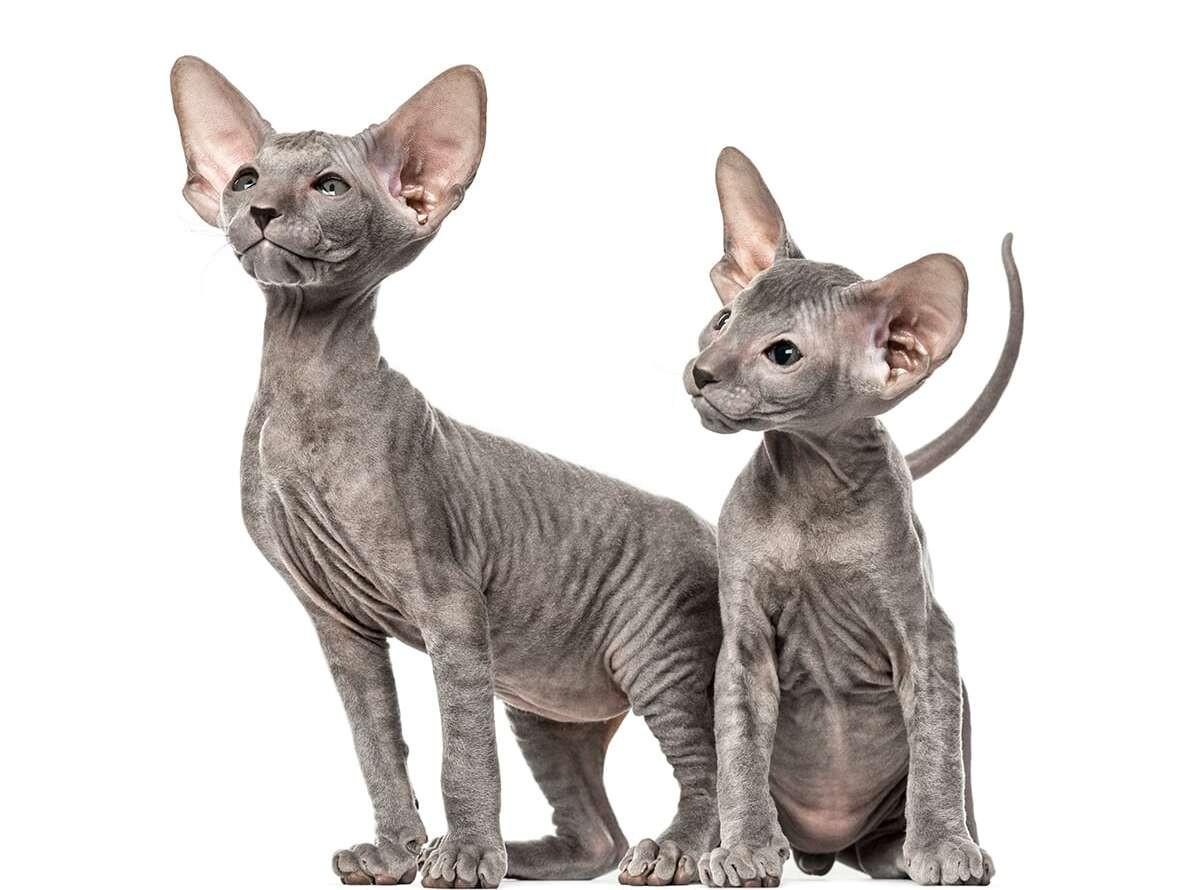
Peterbalds are an interesting hairless breed because they can have a more visible coat of fine down than other breeds and sometimes live life with a full coat of fur. This Russian breed is a cross between the Donskoy and an Oriental Shorthair.
Their heads tend to be narrow and long, and they have very large ears. They can be about eight to 10 inches tall and weigh between six to 10 pounds. They tend to have long legs.
Peterbalds are very intelligent, curious and social. They like being around other people, much like many other cats among the hairless breeds.
Minskin
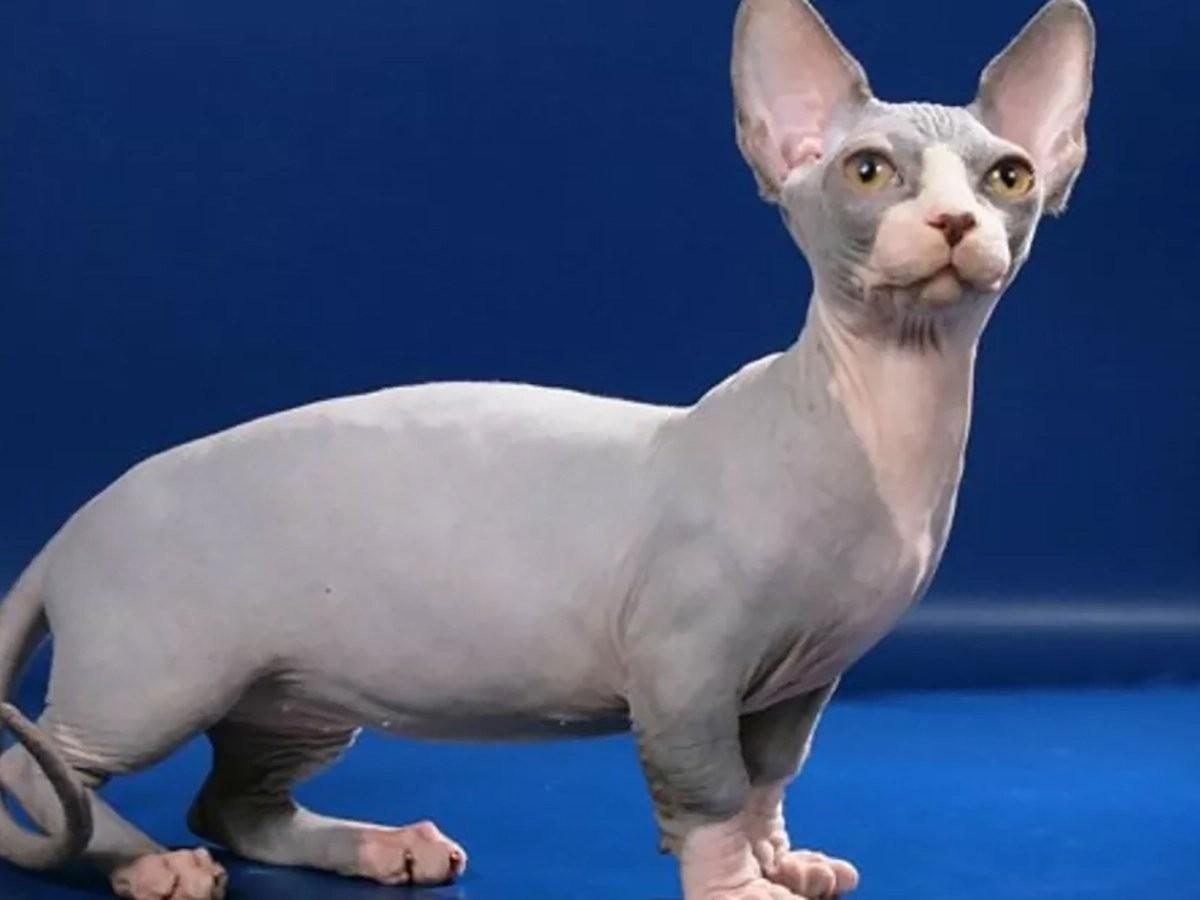
Minskins are among the smaller of the hairless breeds. They are a mix of Sphynx, Munchkin, Devon Rex and Burmese cats. They are fairly similar to the Bambino breed, with short, stumpy legs.
They are more outgoing cats, so they like being around you. They can sometimes have a bit of short fur or downy fuzz, which usually tend to be on the tips of their ears, noses, or tails.
They weigh between four and six pounds and are seven to eight inches tall, so they can be much smaller than the Bambino or even the Dwelf. However, their size does not limit their extroverted nature.
More About Spot Pet Insurance
Cat insurance can help provide financial assistance for covered veterinary care in case of unexpected accidents, illnesses, or injuries. Our plans can help pet parents manage the eligible costs of covered veterinary care and help ensure that their pets can receive the best treatment possible. Here are some ways that Spot pet insurance plans can help:
Helps Cover Unexpected Veterinary Costs: Spot pet insurance plans help cover the eligible costs of unexpected veterinary treatments, such as emergency surgeries, X-rays, and prescription medications for covered conditions.
Customizable Plans: Choose your annual limit, reimbursement rate, and deductible from a range of options, and create the plan that will fit the needs of your pet and your budget.
Peace of Mind: With Spot pet insurance plans, pet parents can know that they can provide the best care for their pet with less worry about the cost.
To learn more about Spot Plans or to get a free quote, click here.

I've had the privilege of immersing myself in the realm of pet safety. As the owner of an energetic mini golden doodle, I know just how stressful being a pet owner can be. I am dedicated to ensuring our beloved pets enjoy a life brimming with good health.
10 Best Hairless Cat Breeds for a Unique Pet Pal | The Spruce Pets
Hairless Cats: Breeds, Info and facts | Petfinder

